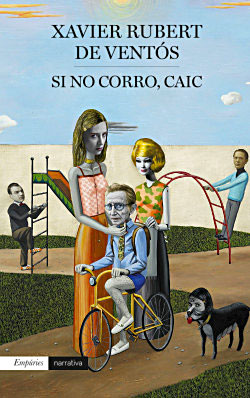
Teoría de la sensibilidad
» Lletra d’Or Award
The framework of the aesthetics in use is insufficient to explain the aesthetic phenomenon.
Classic artistic activity, conditioned today by the urban environment and digital technology has been obliged to broaden its horizons. Teoría de la sensibilidad shows how avant-garde art and aesthetics intuited this transformation and the braodening of its content, although they tried to resolve them without leaving the forms and formats of traditional art. In the face of such formats, which have been coded sonce the Renaissance, Xavier Rubert de Ventós indicates to us the factors that paved the way for this new sensibility.
«Xavier Rubert’s book is a true aesthetic, but one written not just from our time, but which also tried to predict the art that is already “there” even if we cannot yet see it.» José Luis Aranguren
«The most acute observations on subjects as diverse as vulgarity, style, mass culture, the return of the myth and the impact of technology on our sensibility.» A. B Savile, The British Journal of Aesthetics





